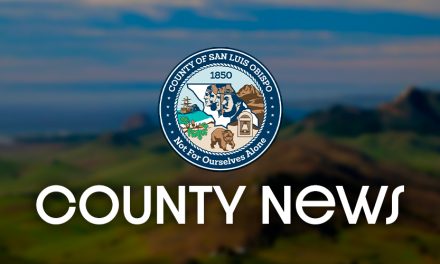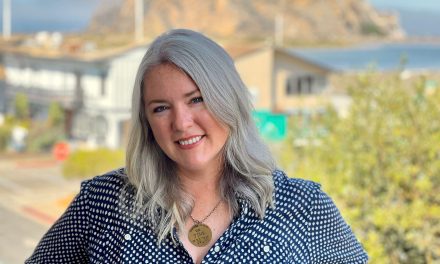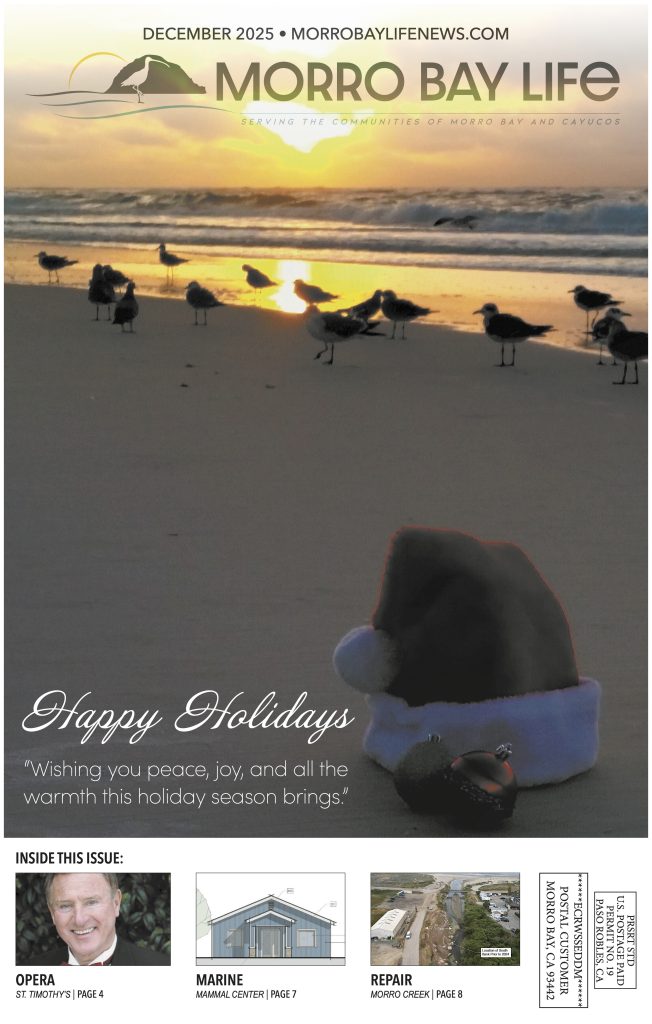Pismo Beach celebrates its 75th cityhood birthday
SAN LUIS OBISPO — The San Luis Obispo County Board of Supervisors met on Tuesday, Apr. 20, for a regularly scheduled meeting. The meeting opened with the consent agenda, of which Supervisor John Peschong requested to pull item two, the introduction of an ordinance amending section 2.48.095 of the County Ordinance Code regarding compensation increases for the Board of Supervisors.
The consent agenda passed 5-0, and 4-0 for item three, which Chairperson Lynn Compton recused herself from for undisclosed reasons.
Item two was voted in favor 3-2, with Peschong and Compton against the item.
SLO County Public Health Officer Dr. Penny Borenstein presented a current update on COVID, which to date has had 20,972 cases in the county, and of that, only 211 are currently active five hospitalizations, and two people in the ICU.
To read the full report on the COVID update, State Updates Blueprint Framework to Help Counties Maintain Current Tier on page 8.
Borenstein then proceeded with going over the state’s Blueprint Metrics. She stated, “unfortunately, the case count numbers place the county at 6 percent adjusted case positivity rate when it would need to be at 5.9 to move the county into the Orange Tier.”
Borenstein explained that she has already begun a dialogue with the state to see if there are any missing test numbers from the week in question that could move the county into the Orange Tier. By returning to the Red Tier in case positivity, it would require that the county start over the process of achieving two weeks of low numbers before moving into the Orange Tier.
Borenstein also addressed nonfactual responses to the vaccine and encouraged everyone to do their homework to learn the truths and decide what’s right for them.
The supervisors then moved on to public comment and heard from Sherry Nelson, who, in response to Borenstein’s concern about misinformation surrounding vaccinations, suggested a forum in which residents could ask questions and get more information.
Next was a presentation read by Supervisor Dawn Ortiz-Legg, the submittal of the proclamation of the 75th birthday for cityhood in Pismo Beach, which was read to Mayor Ed Waage. Pismo was officially established on Apr. 25, 1946, by JM Price, after beginning its existence as a gold rush-era beach community. Mayor Waage then spoke about the celebration, which due to COVID, will be postponed until October, at which point he plans on inviting the Board of Supervisors for thanks for their part in establishing the city back at its origination.
Following was item 31, the presentation of the annual report by the Commission on the status of women by Paulla Ufferheide. She expressed her pride in the Commission not missing a single meeting throughout the pandemic. The Commission advocates for equal rights for women and girls in the county and works with groups to educate them on the issues affecting women.
“We also try to help with ideas in how to enhance the lives of women within our county,” Ufferheide said.
Throughout this last year, the Commission saw a lot of growth and success, but they are requesting additional support from the Board in the California Assembly Bill AB367, which is the Menstrual Equality Act, which states that schools 6-12 grade, community college, college campuses, and state and municipal buildings shall stock 50 percent of their public restrooms with free menstrual products.
Supervisor Ortiz-Legg made a motion to bring AB367 up for discussion in a future meeting, which was seconded by Supervisor Gibson. The motion passed 5-0.
Peschong made a motion for SLO county to do a cost and benefit analysis for the cost associated with the county taking over waste management and possibly using public works to take over waste disposal and recycling following state mandates. Arnold seconded the motion. The motion was approved 3-2, with Gibson and Ortiz-Legg in opposition.
The next item was the update on the redistricting effort and request to authorize a budget adjustment in the amount of $150,139 from General Fund Contingencies.
As mentioned in previous meetings, the census data will not be available until September 2021, and state-adjusted data may take until the end of October.
Counties have to use state-adjusted data to create the maps and cannot publish or draft maps until that data is made public. Given those delays in data, the timeline for redistricting will be tough to complete, which is why staff is creating a website featuring a public-facing mapping tool where citizens can submit maps, suggestions, and community groups they want considered in the process.
The earliest date for the draft of the maps is likely to be Nov. 20, with a turnaround the following week to revise and finalize the map. The request for additional funds is to assist county staff with consulting contracts, and any amounts not used would be returned to the general fund at the end of the year.
Staff recommendations are to receive and file and approve the $150,139 in funding to facilitate the redistricting efforts.
A motion was made by Supervisor Peschong and seconded by Supervisor Bruce Gibson and passed 5-0.
Item 34 was a report on the American Rescue Plan Act of 2021 (ARPA). A 1.9 trillion dollar package to address the health crisis and economic crisis that went along with the pandemic. While guidance from the Federal Government on how the money can be spent has yet to be issued, nor the exact amounts the county will be receiving. The expectation is that the county will receive 54.9 million split into two payments, one in May and one a year later. The deadline to spend the money will be Dec. 31, 2024.
The current plan is to take a budget-like approach with the funds and allocate for a one-time use since it is not money that will be funded to the county year over year. The anticipation is to see guidance from the Federal Government for these funds on or about May 10.
Item 35 to receive and file a presentation of the Paso Robles Basin Aerial Groundwater Mapping Pilot Study results. There were several objectives to the study, mainly to get a better understanding of groundwater conditions within the Paso Basin.
By using state-of-the-art technology, attaching instruments to a low flying helicopter, the project was able to take MRI of the land up to 1400 feet deep. The takeaway from the study was the ability to identify potential recharge areas based on the coarseness of the soils underground.
Item 36 was the county staff’s response to the Board’s prior request for a consultant-based approach to staffing for the County Groundwater Sustainability Agency. This staffing approach would utilize one county staff member, and all additional support would be in the form of consultants. The comparison of cost analysis between consultant verse county staff could not be fully completed due to the time constraints and inability to get quotes from consultants.
Supervisor Arnold made a motion to pursue the consultant model, with a second by Peschong. The motion passed 5-0.

Supervisor Debbie Arnold motioned on a non-agenda water topic to bring back before the Board on May 4, a letter from the Supervisors opposing two applications that were submitted to the California State Water Resource Board by the Shandon San Juan Water District to appropriate water from Lake Nacimiento and Lake Santa Margarita. In accordance with the Brown Act, this topic could not be discussed, except to schedule it for a future meeting with notice to the public.
After a closed session, with nothing to report, the Board went to the hearings on land use permits. Starting with item 38, a hearing to consider an appeal by Maldonado of the planning department’s approval of a minor use permit for SLO Cal Root to establish 3.39 acres of outdoor cannabis cultivation and more.
Due to some confusion of having received a request for a continuance from the appellant and then the applicant, the Board voted 5-0 to continue the discussion in the Jul. 13 meeting. In accordance with the Brown Act, the Board heard all public comment.
Public comment on the matter ranged from opposition to support of the project, with the majority favoring denial of the project. The reasons stated for denying the project were largely due to the odor, the current use of the area, which is primarily single-family homes as well as some agriculture, and the water usage.
During public comment, Christina Maldonado, the appellant, called in to explain that she did not want a continuance and that they had inquired about it only when it was under question as to the name on the application for the project. She also stated that her counsel had not only emailed on Apr. 19 but had also called in to say that they did not want a continuance.
The Board ultimately upheld their decision, and the continuance is set for Jul. 13.
The last item of the day was a hearing to consider the appeal by Cliff Bianchine of the Planning Department’s Hearing Officer to conditionally approve the application of Copper Creek Farms to cultivate 5.7 of the 54-acre plot for cannabis growth and cultivation.
The project was approved based on compliance of all the Land Use Ordinances (LUO) in the area and the addressing of all appeal issues in the Mitigations Negative Declaration (MND) prepared April 2020 and revised July 2020. Brought up in the appeal was the deeded easement for ingress and egress to the property, past-due property taxes, and code violations that have existed on the site but have since been resolved.
SLO County staff recommendation was to deny the appeal and uphold the Planning Departments’ decision.
In hearing public comment, the Board heard from several neighbors to the project, who brought up items both retaining to the project as well as the behavior and past actions of the owner.
Peschong spoke on the matter, stating, “In weighing this, I’m not against cannabis being grown; we’ve put it on ag and rural lands… Looking at the code violation… unpermitted power and plumbing… I gotta be honest with you, very tough to get my arms around that.”
His feeling around the structure was that it may have been for farmworkers. “I feel this code violation is big enough for me that I cannot support this project.
Arnold spoke on the easement of the road and thought that commercial activity on the shared road was beyond what was ok to introduce into a neighborhood.
The Board was split 3-2 in a decision to uphold the appeal, with Gibson and Ortiz-Legg in favor of the applicant.
The finding of the hearing was that the Board denied the project on the finding that the size and scale of the development were incompatible with historical and neighboring uses, insufficient demonstration of effective methods to control offsite odors, and that the nature of the verified code violations on the site during the application processing may result in repeat code violations.
The next meeting of the Supervisors will be held on May 4, and the links to join can be found on the district website at slocounty.ca.gov







